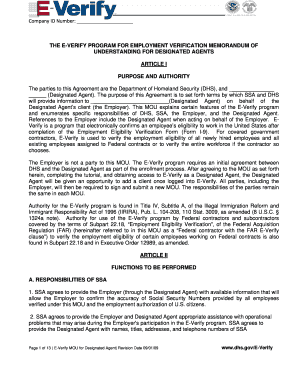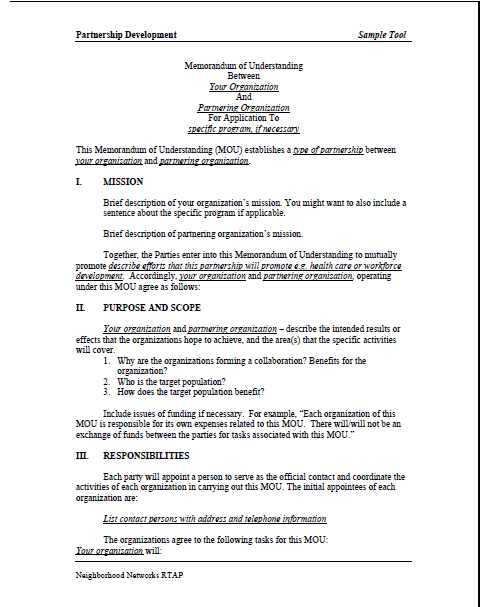
MOU DRAFT FORMAT HOW TO
How to Write a Memorandum of UnderstandingĪn effective Memorandum of Understanding prevents misunderstandings and potential disputes by clearly laying out the expectations and responsibilities of all parties to the agreement. An agreement is made with the express intention to take the other party to court, should the other party breach the terms of the agreement in any way. The major difference between an agreement and an MOU is that parties will typically go for a MOU if they have no interest in ever involving a court in their affairs. In the event that one party fails to fulfill his end of the agreement, then the other party can take him to court to sue for damages.

A MOU will generally refer to and set out a time frame for the parties to enter into a final binding and legally enforceable contract.Īn agreement is more straightforward than an MOU in that once an offer is made by one party and accepted by the other, the agreement then becomes a binding promise that the parties have agreed upon. A MOU is generally not binding or enforceable in a court of law. This includes: an offer acceptance of that offer intentions for the project and payment or ‘consideration’ of the terms of the project. In essence a MOU is outline or proposed understanding to something two parties agree to but have not formally committed to or detailed the specific responsibilities of each party. The following outlines the key concepts in an MOU.Ī MOU describes the terms of an agreement without being legally binding or involving the transfer of finances. An MOU is more of a promise, whereas a contract is a commitment.

While a MOU is a kind of agreement, there are actually several differences between a Memorandum of Understanding and a formal agreement. This MOA may be terminated by mutual agreement of the parties, and shall automatically terminate upon completion of all responsibilities as stated herein, unless otherwise amended.A Memorandum of Understanding (“MOU”) is a nonbinding written document that states the responsibilities of each party to an agreement or contract, before the official contract is drafted.

This MOA may be amended from time to time by mutual agreement of the parties in a written modification signed by both parties.Ĥ. It is the intention of the parties that, where fault is determined to have been contributory, principles of comparative fault will be applied.Ģ.Each party, at its sole cost and expense, shall carry insurance or self insure to cover its activities in connection with this MOA, and obtain, keep in force and maintain, insurance or equivalent programs of self-insurance, for general liability, workers compensation and business automobile liability adequate to cover its potential liabilities hereunder.ģ. Each party agrees to indemnify, defend and hold harmless the other to the fullest extent permitted by law from and against any and all demands, claims, actions, liabilities, losses, damages, and costs, including reasonable attorney’s fees, arising out of or resulting from the indemnifying party’s acts or omissions related to its participation under this Memorandum of Agreement, and each party shall bear the proportionate cost of any damages attributable to the fault of such party, its officers, agents, employees and independent contractors. Each party takes legal and financial responsibility for the actions of its respective employees, officers, agents, representatives and volunteers. It is mutually understood and agreed by and between the parties that:ġ.


 0 kommentar(er)
0 kommentar(er)
